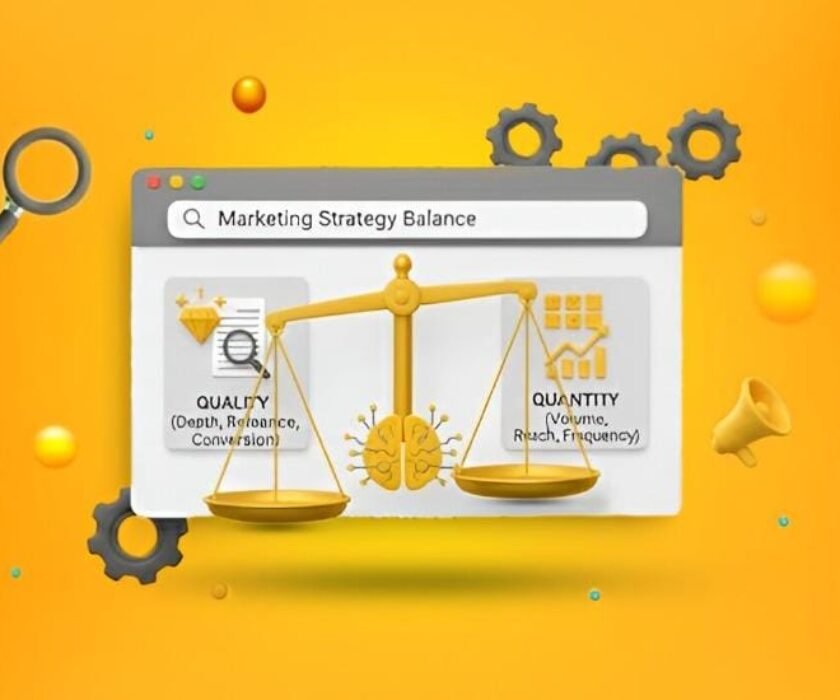In today’s digital age, advertising has become more dynamic than ever before. As businesses strive to reach their target audience in the most effective way possible, the choice between Google Ads and Social Media Ads has become a crucial decision. Both platforms offer unique advantages and cater to different aspects of online marketing. Understanding the strengths and weaknesses of each can make a significant impact on the success of your advertising strategy.
Google Ads:
Google Ads, formerly known as Google AdWords, is a powerful platform for reaching potential customers who are actively searching for products or services. It operates on a pay-per-click (PPC) model, where advertisers bid on keywords to display their ads in relevant search results.
Advantages:
- Intent-Driven: Users on Google are often searching for specific products or solutions, making it easier to capture high-intent leads.
- Keyword Targeting: Precise targeting allows you to reach users based on specific search terms related to your business.
- Ad Extensions: Google Ads offers various ad extensions, enhancing your ad’s visibility and providing additional information to potential customers.
- Performance Tracking: Robust analytics tools enable detailed tracking of campaign performance, allowing for optimization and refinement.
- Local Targeting: Google Ads allows for precise local targeting, making it an excellent choice for businesses looking to attract customers in specific geographic areas.
- Search Network and Display Network: With Google Ads, you can choose between the Search Network (text-based ads in search results) and the Display Network (visual ads on various websites), providing flexibility in your advertising strategy.
- Shopping Ads: Ideal for e-commerce businesses, Google Shopping Ads showcase products directly in search results, including an image, price, and product details.
- Immediate Results: Google Ads can generate quick results, especially for businesses in urgent need of visibility, such as during promotional periods.
Social media ads:
Social media advertising, on platforms like Facebook, Instagram, and Twitter, focuses on reaching users based on their demographics, interests, and online behavior. It’s a great option for building brand awareness and engaging with a broader audience.
Advantages:
- Audience Targeting: Social media platforms allow you to target specific demographics, interests, and behaviors, reaching a more defined audience.
- Visual Content: Ideal for businesses with visually appealing products or services, as these platforms are image-centric.
- Engagement Opportunities: Social media ads encourage interaction, likes, shares, and comments, fostering a sense of community and brand loyalty.
- Retargeting: Social media platforms provide retargeting options, allowing you to reconnect with users who have previously interacted with your brand.
- Influencer Collaborations: Social media platforms allow for influencer collaborations, leveraging the reach and credibility of influencers to promote your products or services.
- Story Ads and Filters: Platforms like Instagram and Snapchat offer immersive ad formats like story ads and filters, providing a creative way to engage with the audience.
- Content Sharing: Social media ads have the potential to go viral through likes, shares, and comments, extending the reach of your campaign beyond your immediate audience.
- Custom Audiences: Social media platforms enable the creation of custom audiences based on existing customer lists or website visitors, facilitating targeted advertising to specific groups.
Choosing the Right Platform:
- Consider Your Goals: If your goal is to capture high-intent leads actively searching for your offerings, Google Ads may be more suitable. For brand awareness and engagement, social media ads can be effective.
- Know Your Audience: Understand where your target audience spends their time online. If they actively use specific social platforms, it might be the right place to advertise.
- Budget and Resources: Assess your budget and the resources available for ad creation and management. Google ads may require more keyword research and optimization, while social media ads may involve more visual content.
- Integration: Consider how each platform integrates with your overall marketing strategy. A combination of both may be beneficial for a comprehensive approach.
- Ad Content Complexity: Google Ads are typically text-based, making them effective for conveying specific information. Social media ads, with their visual emphasis, are better suited for conveying emotions and brand aesthetics.
- Ad Approval Process: Google Ads may have a stricter ad approval process, ensuring compliance with policies. Social media platforms may offer a more straightforward approval process, but with specific content guidelines.
- Ad Cost Variability: The cost of advertising can vary between platforms and industries. Google Ads’ costs may fluctuate based on keyword competitiveness, while social media ad costs may depend on factors like audience targeting and engagement objectives.
- Mobile vs. Desktop: Consider the device preferences of your target audience. Google ads may perform well on desktop searches, while social media ads might be more effective on mobile devices.
Ultimately, the choice between Google Ads and social media ads depends on your business goals, target audience, and the nature of your products or services. If you prioritize reaching users actively searching for what you offer, Google Ads might be the better choice. On the other hand, if you aim to build brand awareness, engage with a specific demographic, and leverage visual content, social media ads may be a more suitable option.
In many cases, a combination of both Google Ads and social media ads can create a comprehensive and effective digital marketing strategy. Understanding the strengths of each platform and aligning them with your business objectives will help you make the right decision for your advertising efforts.














